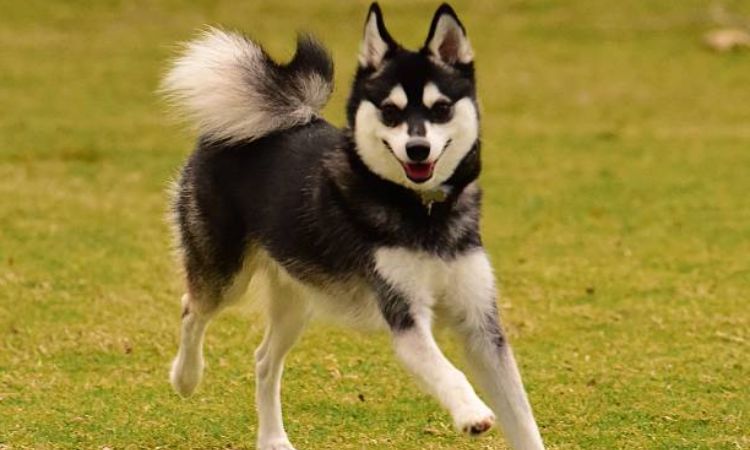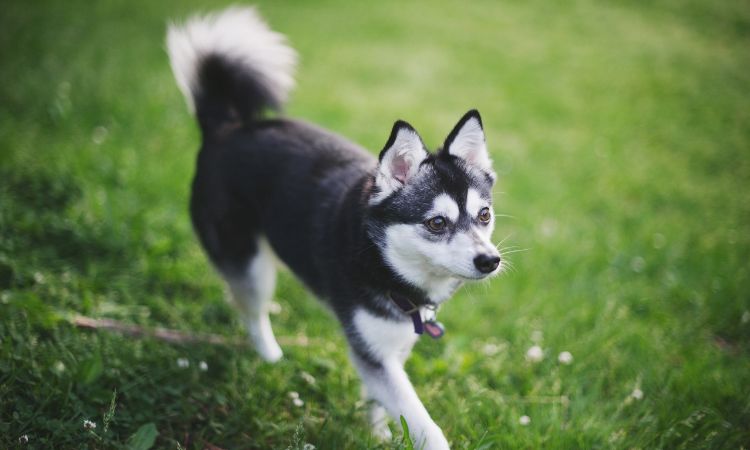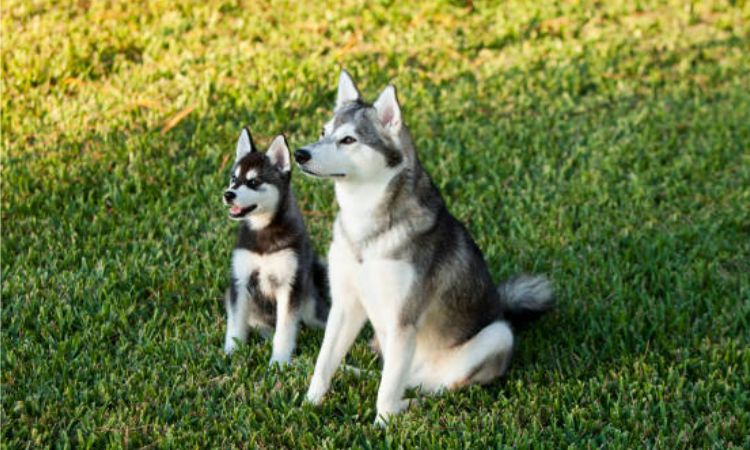The Alaskan Klee Kai is a small but striking dog breed that carries the look and spirit of its larger relatives, the Alaskan Malamute and Siberian Husky. Developed in the late 20th century, this companion-sized dog offers all the charm and energy of a husky in a more manageable package.
If you’re wondering whether an Alaskan Klee Kai might be the right fit for your life, Nexus-pets will walk you through everything you need to know before bringing one home.

Breed Background and History
The Alaskan Klee Kai was developed in the 1970s in Alaska with the goal of creating a smaller companion-sized version of the Alaskan Husky. The breed was the result of selective breeding initiated by Linda Spurlin, who crossed Alaskan Huskies with Siberian Huskies, American Eskimo Dogs, and Schipperkes. This program aimed to produce a dog that retained the appearance, agility, and northern heritage of larger sled dogs but in a more manageable size suited for companion purposes. The name “Klee Kai” comes from the Athabaskan language and means “little dog,” reflecting its smaller stature compared to its larger northern relatives.
The breed gained formal recognition in 1997 when the United Kennel Club (UKC) officially recognized the Alaskan Klee Kai as a distinct breed, helping to establish standards for breeding and showing. While still relatively rare compared to other northern breeds, the Alaskan Klee Kai has grown steadily in popularity among dog enthusiasts who appreciate its intelligence, energy, and unique appearance.
Physical Characteristics & Temperament and Personality
The Alaskan Klee Kai is a small to medium-sized dog with a well-proportioned, agile body and a thick double coat that comes in three primary color patterns: black and white, gray and white, or red and white. Their expressive, wedge-shaped head with erect triangular ears and a curled tail reflect their spitz heritage and Arctic ancestry. Despite their compact size, they possess strong, thick bones and a sturdy frame that supports impressive agility and endurance.
Temperament-wise, the Alaskan Klee Kai is known for being alert, energetic, and highly intelligent. They form strong bonds with their family members and show affectionate loyalty, yet they tend to be reserved or aloof when meeting strangers. This breed often exhibits a strong prey drive, which means they may be inclined to chase smaller animals. They are also known to be vocal or “talkative,” frequently using a variety of barks and sounds to communicate. While excellent watchdogs due to their alertness, they are not typically guard dogs and rarely show aggressive behavior.

Socialization from an early age is crucial for Alaskan Klee Kai to prevent excessive shyness or wariness around unfamiliar people. Consistent exposure to different environments, people, and other animals helps them develop confidence and balanced social skills.
Given their high energy levels, these dogs require regular daily exercise, including walks, active play, and mental challenges. They thrive in activities such as agility training, hiking, and interactive enrichment games. Without adequate physical and mental stimulation, they can become bored, leading to destructive or mischievous behavior. Their intelligence makes them quick learners, but also means they need continual engagement to stay happy and well-behaved.
Grooming and Shedding
The Alaskan Klee Kai has a double coat made up of a soft, dense undercoat and a coarser outer coat. Regular grooming is important to keep their coat healthy and looking its best. Weekly brushing helps remove loose hairs and prevents matting, especially during normal shedding times.
Twice a year, usually in spring and fall, they go through a heavy shedding phase called “blowing their coat,” where they lose large amounts of their undercoat. During this time, more frequent brushing—sometimes daily—is necessary to manage the excess fur.
Bathing is generally needed only a few times a year, often during shedding season, to help loosen and remove dead undercoat hairs. Along with grooming, routine care like nail trimming, ear cleaning, and dental hygiene is essential to keep your Alaskan Klee Kai healthy.
Health and Lifespan
The Alaskan Klee Kai typically lives between 12 and 20 years, with many enjoying a long, healthy life well into their teens. This breed is generally healthy, especially when you choose a responsible breeder who tests for common health issues.
However, some health concerns to watch for include:
- Patellar luxation: A condition where the kneecap slips out of place, which can cause pain or difficulty walking.
- Juvenile cataracts: Clouding of the eye lens that may affect vision.
- Thyroid problems: Such as autoimmune thyroiditis, leading to low thyroid hormone production (hypothyroidism).
- Ear infections: Occasionally seen, sometimes related to thyroid issues.
Regular vet check-ups and early detection are key to managing these conditions and helping your Alaskan Klee Kai stay healthy and happy.
Training and Socialization & Living Requirements
Training and Socialization
The Alaskan Klee Kai is highly intelligent and quick to learn, but its independent and sometimes stubborn nature means training requires patience and experience. For the best results, owners should use positive reinforcement techniques, maintain consistency, and keep training sessions short and engaging to hold the dog’s interest. Early socialization is essential to help them become comfortable around strangers and other animals, reducing excessive shyness or vocalization.
Living Requirements
Alaskan Klee Kais can adapt well to apartment living as long as they receive ample daily exercise to burn off their high energy. Because they are agile and curious, a secure, fenced yard or environment is important to prevent them from escaping. This breed is not ideal for owners who are frequently away for long hours, as they can develop separation anxiety. Additionally, those who prefer quiet, low-shedding pets might find the Alaskan Klee Kai’s vocal tendencies and moderate shedding less suitable.

Who Should (and Should Not) Get an Alaskan Klee Kai
The Alaskan Klee Kai is best suited for active individuals or families who can dedicate time and energy to their dog’s daily exercise, mental stimulation, and grooming needs. This breed thrives in homes where owners have experience with dogs and understand the importance of consistent training and socialization. If you enjoy outdoor activities like jogging, hiking, or agility training, and are looking for a loyal, intelligent companion, the Alaskan Klee Kai could be a perfect fit.
On the other hand, this breed is not ideal for those who spend long hours away from home, as they can develop separation anxiety and become vocal or destructive when lonely. First-time dog owners might find the Klee Kai’s stubborn streak and training needs challenging without prior experience. Additionally, if you are searching for a quiet, low-maintenance pet with minimal shedding and grooming, the Alaskan Klee Kai may not be the best choice due to their vocal nature and moderate shedding.






